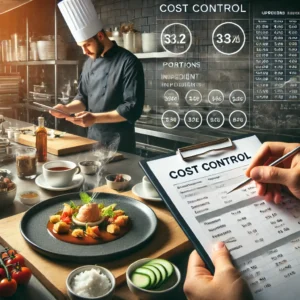Menu Engineering: Protect Margins Without Losing Quality
- Phone: +1(833)PHX-Geek
- 712 H St NE Suite 1904 Washington, D.C. 20002
Are you looking to come to Toast POS? Follow this link to sign up and get a free quote from your local Toast Rep. They will come out to your restaurant, and give you a free, no obligation quote.
Introduction
Menu engineering is a strategic approach used in the food and hospitality industry to optimize menu design and enhance profitability. By analyzing menu items in terms of their popularity and profitability, businesses can identify which dishes to promote and which to reconsider. This method not only aims to protect the restaurant's margins but also ensures that the quality of offerings remains uncompromised. Understanding the basics of menu engineering is essential for any restaurant looking to maximize its financial performance without sacrificing customer satisfaction.
Effective menu engineering involves a comprehensive analysis of sales data and costs associated with each menu item. By categorizing items into four distinct groups—stars, plowhorses, dogs, and puzzles—restaurant owners can make informed decisions about pricing, placement, and promotion. Stars are high in both popularity and profitability, while plowhorses are popular but less profitable. Conversely, dogs are low in both categories and should be minimized, whereas puzzles are profitable but not well-known. This categorization aids in visualizing the strengths and weaknesses of a menu.
Incorporating menu engineering principles allows restaurants to create a more strategic offering that aligns with consumer preferences and market trends. For example, highlighting certain dishes through creative descriptions or strategic placements can draw attention to profitable items, thereby increasing overall sales. A well-engineered menu not only protects margins but also enhances the dining experience, ensuring guests enjoy their meals and return for more.
The design of a menu plays a pivotal role in influencing customers' choices and, ultimately, a restaurant's profitability. One key strategy in menu engineering is the use of visual cues and layout techniques to guide the customer’s journey through the menu. Implementing distinct sections, using enticing language, and highlighting high-margin items can significantly impact purchasing behavior. For instance, placing high-profit items at the top of the menu or using boxes and borders to draw attention to certain dishes can encourage customers to choose those options.
Another vital aspect of effective menu design is pricing strategy. Restaurants must carefully consider their pricing structure to balance customer perception with profitability. Psychological pricing, such as pricing items just below whole numbers (e.g., $9.99 instead of $10), can create a perception of value. Additionally, offering a range of price points can attract different customer segments, ensuring that both budget-conscious diners and those willing to spend more are catered for.
Finally, regular reviews and updates of the menu are essential for keeping it fresh and aligned with customer preferences. Seasonal items, limited-time offers, and trending dishes can keep the menu dynamic and encourage repeat visits. By continuously analyzing sales data and customer feedback, restaurants can refine their offerings and maintain a competitive edge in the market.
In the quest to protect margins, restaurants must find a balance between cost control and maintaining high-quality standards. Cost control measures, such as portion sizing and ingredient sourcing, are crucial for ensuring profitability. However, these measures should not compromise the quality of ingredients or the overall dining experience. Using high-quality ingredients while finding cost-effective suppliers can help achieve this balance.
 Another effective tactic is menu simplification, which involves reducing the number of items offered while focusing on the best sellers. This not only lowers food costs but also streamlines kitchen operations, reduces waste, and enhances service speed. By concentrating on a smaller selection of high-quality dishes, restaurants can maintain their culinary standards without incurring excessive costs.
Another effective tactic is menu simplification, which involves reducing the number of items offered while focusing on the best sellers. This not only lowers food costs but also streamlines kitchen operations, reduces waste, and enhances service speed. By concentrating on a smaller selection of high-quality dishes, restaurants can maintain their culinary standards without incurring excessive costs.
Ultimately, it is essential for restaurant owners to communicate the value of quality to their customers. By emphasizing the sources of their ingredients, preparation methods, and the care involved in crafting each dish, restaurants can justify their pricing and encourage customers to appreciate the quality of what they are consuming. Striking the right balance between cost control and quality will lead to sustainable profitability.
Across the restaurant industry, several establishments have successfully implemented menu engineering strategies to enhance profitability while maintaining quality. One notable example is a popular chain that revamped its menu based on data-driven insights. By analyzing sales and customer feedback, they streamlined their offerings to focus on top-selling items while eliminating underperforming dishes. This not only improved their profit margins but also simplified kitchen operations, allowing for better consistency in food quality.
Another case is a fine dining restaurant that utilized creative descriptions and visual layouts in its menu design. By highlighting seasonal ingredients and presenting dishes in an appealing manner, they were able to elevate the perceived value of their offerings. This approach not only attracted new customers but also encouraged repeat visits, leading to increased loyalty and higher overall sales.
Additionally, many successful restaurants emphasize transparent communication with their guests about the sourcing of ingredients and their culinary philosophy. This strategy enhances customer trust and appreciation for quality, ultimately leading to a willingness to pay a premium for well-crafted dishes. These real-world examples demonstrate that effective menu engineering can lead to enhanced profitability without sacrificing the essence of what makes dining enjoyable.
Conclusion
In conclusion, menu engineering is a vital process for restaurants aiming to protect their margins without compromising quality. By understanding the principles of menu design and employing strategic approaches, restaurant owners can enhance profitability while ensuring customer satisfaction. Through thoughtful analysis, creative design, and a commitment to quality, restaurants can thrive in a competitive industry.